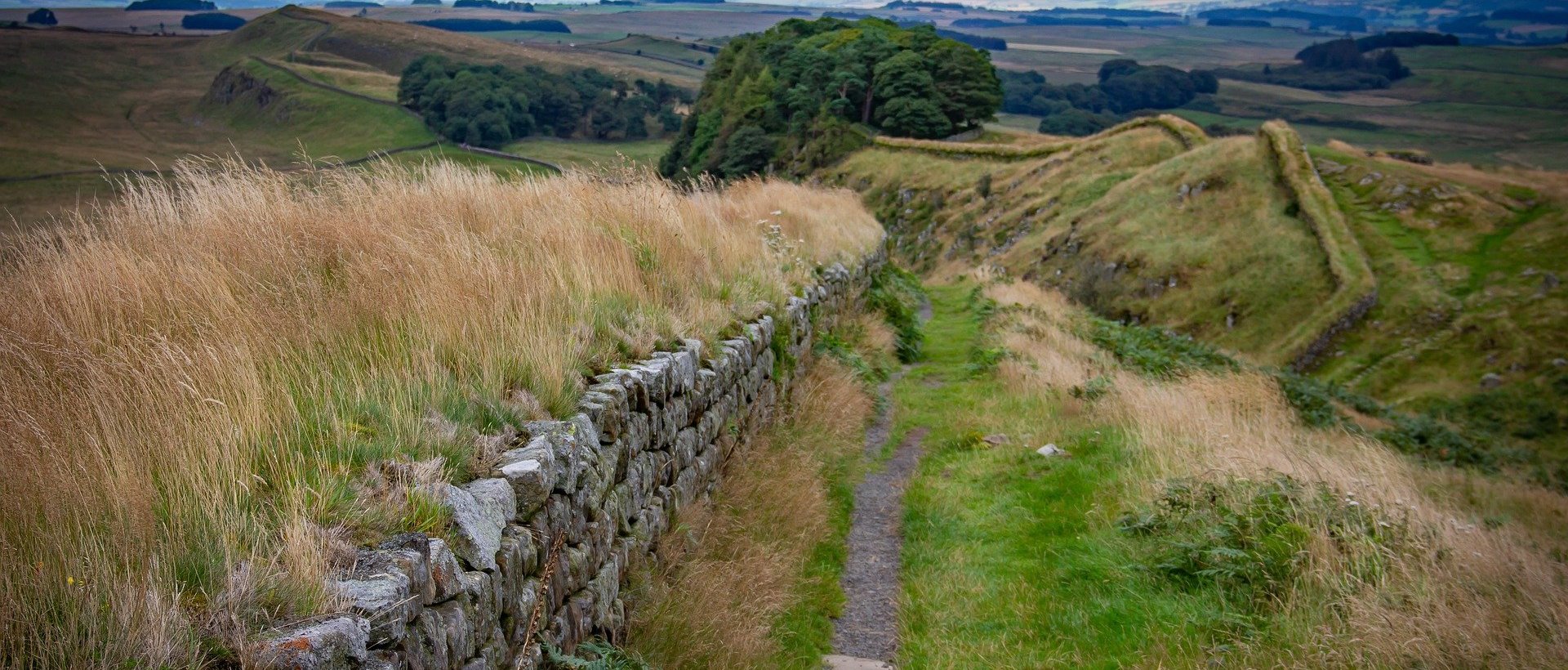Hadrian's Wall
Posted on 26th December 2020
A stone wall in the north of England from Wallsend on the east coast, to Bowness-on-Solway on the west coast, built on the orders of emperor Hadrian and named after him.
Hadrian commenced building of this wall in 122AD to keep the Picts and Barbarians (Scots) away from Roman England. The Scots did attack the wall on many occasions, but the Romans simply rebuilt it.
The wall was 6 metres (19.5 feet) high, 3 metres (9.5 feet) wide and stretched for over 117 kilometres (73 miles) (80 roman miles).
Every 1500 metres (1 mile) of wall a castle was built (a mile castle). These castles housed 20 soldiers and were often made of wood. Between mile castles were two evenly spaced turrets that were always made of stone. The turrets were 4.5 metres (15 feet) high and 2.5 - 3 metres (8 - 10 feet) wide. Soldiers would stand on these turrets and watch over the countryside for enemy attack.
Along the length of the wall were sixteen forts. These ranged in size from 1.5 hectares (3.7 acres) to 3.75 hectares (9 acres) and could house up to eight hundred soldiers. The forts were fully functioning and included a bakery, hospital, stables and even a prison. There was also a Commanding Officers House where he would entertain guests and barracks for the soldiers.
The wall was built by three Roman Legions and much of it was built in as little as six years, although building work is likely to have continued through to the end of Hadrian’s reign.
Following Hadrian’s death, the wall was abandoned; although the quality of its construction is shown in the fact that much of the wall remains today.
Tagged as: Junior Ancient Rome
Share this post:





